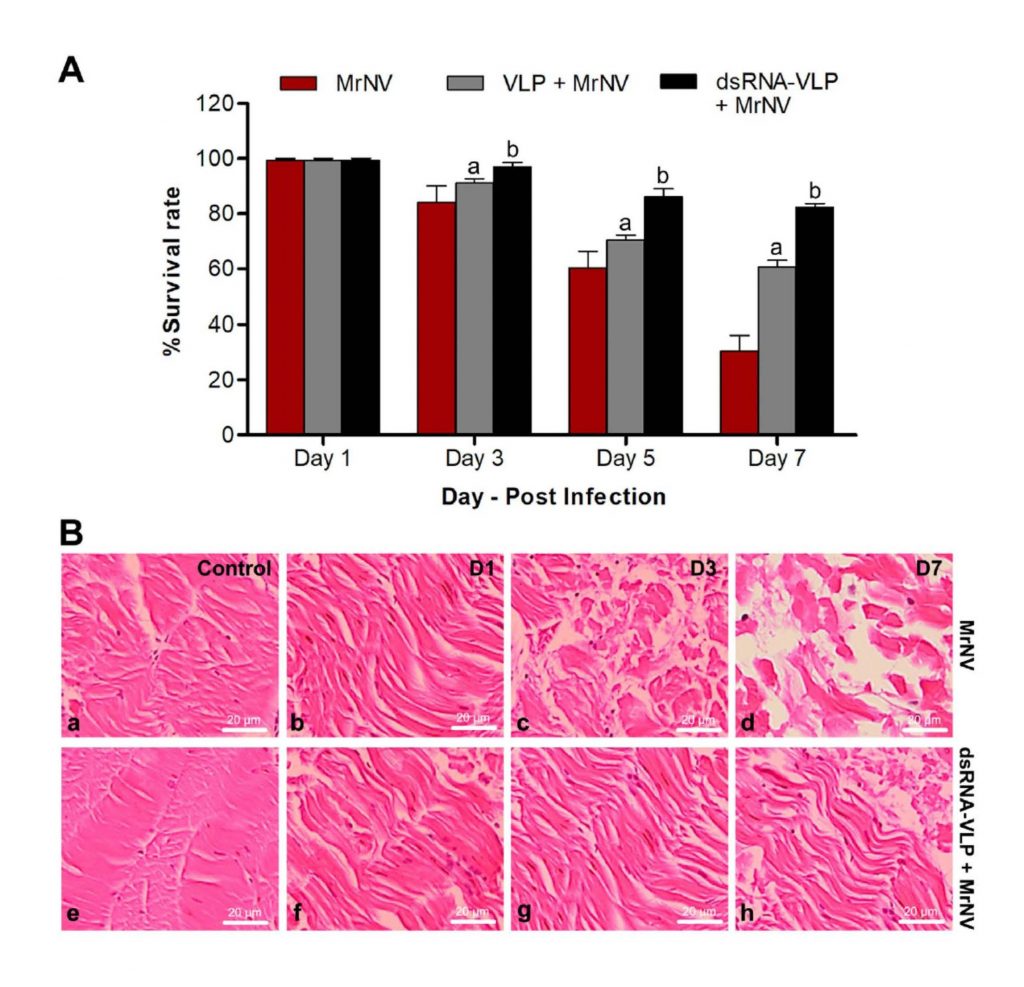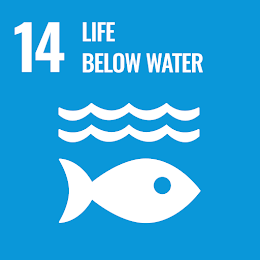Highlight
นักวิจัยได้พัฒนาเทคนิคใหม่ในการป้องกันกุ้งจากไวรัส โดยใช้วิธี RNA interference (RNAi) บรรจุสารพันธุกรรม dsRNA ลงใน อนุภาคเลียนแบบไวรัส (VLPs) แล้วให้กุ้งดูดซึมผ่านการแช่น้ำ แทนการฉีดเข้าไปในตัวกุ้ง ผลทดลองกับลูกกุ้ง 10,000 ตัวที่สัมผัสไวรัส พบว่า กุ้งที่ได้รับการรักษารอดถึง 80% และมีปริมาณไวรัสในร่างกายลดลง วิธีนี้มีศักยภาพสูงในการนำไปใช้ป้องกันโรคในกุ้งระดับฟาร์มอย่างได้ผลและสะดวก

ชื่องานวิจัย ภาษาไทย
การแช่กุ้งด้วยอนุภาคลูกผสม MrN-VLPs ที่บรรจุ dsRNA ช่วยป้องกันโรคไวรัสในกุ้งได้อย่างมีประสิทธิภาพ
ที่มาและความสำคัญ
ในปัจจุบันได้มีพัฒนาเทคนิคใหม่ในการป้องกันกุ้งจากไวรัส โดยใช้วิธี RNA interference (RNAi) โดยการฉีดหรือผสมในอาหารที่ค่อยข้างยุ่งยาก ทีมวิจัยจึงได้พัฒนาการบรรจุสารพันธุกรรม dsRNA ลงใน อนุภาคเลียนแบบไวรัส (VLPs) แล้วให้กุ้งดูดซึมผ่านการแช่น้ำ แทนการฉีดเข้าไปในตัวกุ้งซึ่งทำได้ง่ายขึ้นต่อเกษตรกรผู้เพาะเลี่บงกุ้ง
Abstract
One of the most successful applications to protect aquatic animals from viral infection is the use of RNA interference (RNAi) in the form of double-stranded RNA (dsRNA). However, its administration into animals is usually via injection route (laboratory scale) or mixing feed pellets with bacterial extracts (containing therapeutic compounds); the outcome of which remains to be improved. In this study, we encapsulated purified dsRNA into a virus-like particle (VLP) and delivered it into the prawn tissues by a submersion route using interiorly modified Macrobrachium rosenbergii nodavirus derived VLP with deca-arginine peptide (10R-MrN-VLP) to encapsulate a large scale (gram-level) of dsRNA against RNA2 gene of MrNV capsid. For tracing purposes of submersion administration, GFP plasmid-loaded VLP successfully delivered and expressed green fluorescent protein in prawn-targeted tissues. Delivery efficiency at 12-h submersion was about 50% of the prawn population and became 100% within 72 h, and they remained GFP-positive for up to 7 days during submersion. The protective effect of dsRNA-VLP submersion was tested with a large group (10,000) of post-larvae, which were naturally challenged with MrNV-positive dead prawn. Transcriptome analysis revealed up- and down-regulations of gene clusters involved in metabolism and signal transduction related to an antiviral immune system. The survival rate of prawn treated with dsRNA-VLP reached 80% at Day 7 post-MrNV challenge, significantly different from that of the MrNV-challenged group (control). PCR screening revealed an apparent decrease of MrNV genes and the copy number of MrNV in prawn sampling tissues. Together, we believe that the integration between the chimeric nanocontainer, RNAi technology and submersion application should be foreseen as one of the practical, powerful means to fight against prawn viral infection in field application.
KEYWORDS: MrNV, delivery system, dsRNA; immersion, virus like particle, white tail disease
Citation: Thongsum O, Boonkua S, Jaranathummakul S, Somrit M, Chotwiwatthanakun C, Asuvapongpatana S, Jariyapong P, Weerachatyanukul W. Submersion Treatment of Chimeric MrN-VLPs Encapsulating Therapeutic Double-Stranded RNA Effectively Rescues Prawn Viral Infection. J Fish Dis. 2025 Jun 27:e70009. doi: 10.1111/jfd.70009. Epub ahead of print. PMID: 40579807.
RELATED SDGs:
14. LIFE BELOW WATER

ผู้ให้ข้อมูล: รองศาสตราจารย์ ดร.วัฒนา วีรชาติยานุกูล
ชื่ออาจารย์ที่ทำวิจัย: รองศาสตราจารย์ ดร.วัฒนา วีรชาติยานุกูล รองศาสตราจารย์ ดร.สมลักษณ์ อสุวพงษ์พัฒนา ผู้ช่วยศาสตราจารย์ ดร.มนสิชา สมฤทธิ์
ชื่อนักศึกษาที่ทำวิจัย: Orawan Thongsum, Supawich Boonkua, Somkid Jaranathummakul
แหล่งทุนวิจัย: This research was financially supported by the Agriculture Research Development Agency (ARDA), Thailand (Grant no. CRP6605031150 to W.W.).
Credit ภาพถ่าย: รองศาสตราจารย์ ดร.วัฒนา วีรชาติยานุกูล
Webmaster: ว่าที่ ร.อ. นเรศ จันทรังสิกุล
Tags: delivery system, dsRNA; immersion, MrNV, Virus like particle, white tail disease
